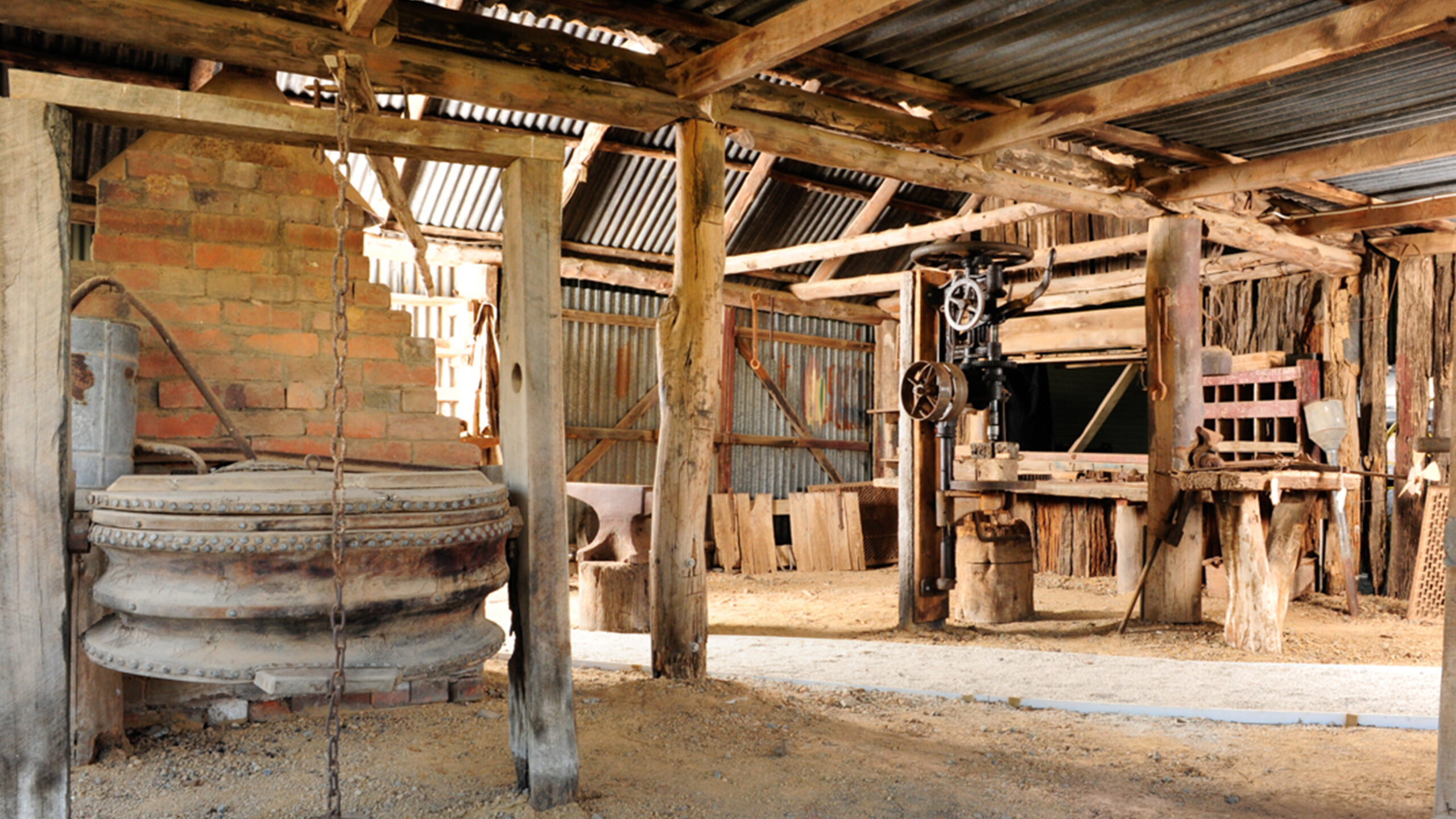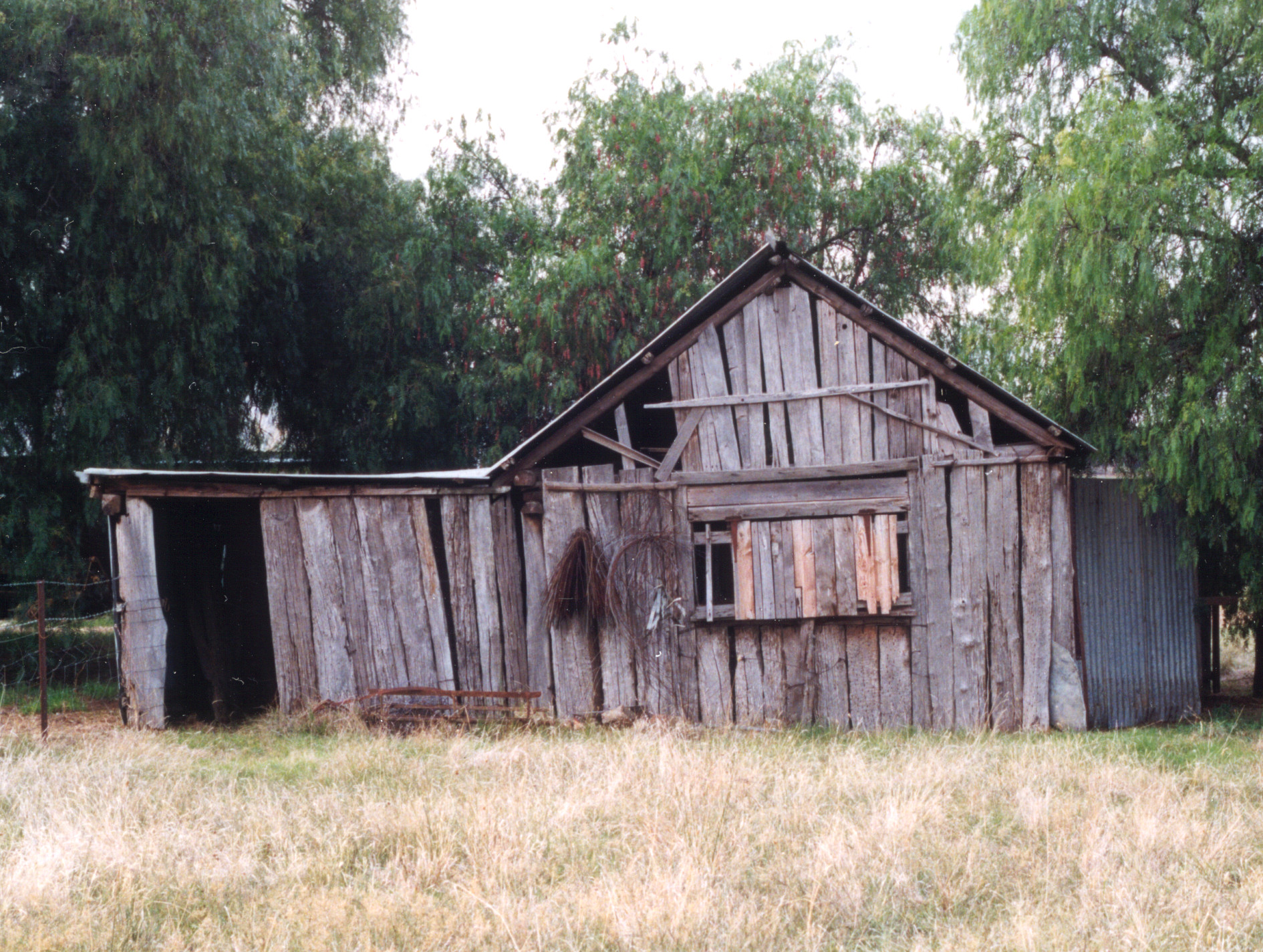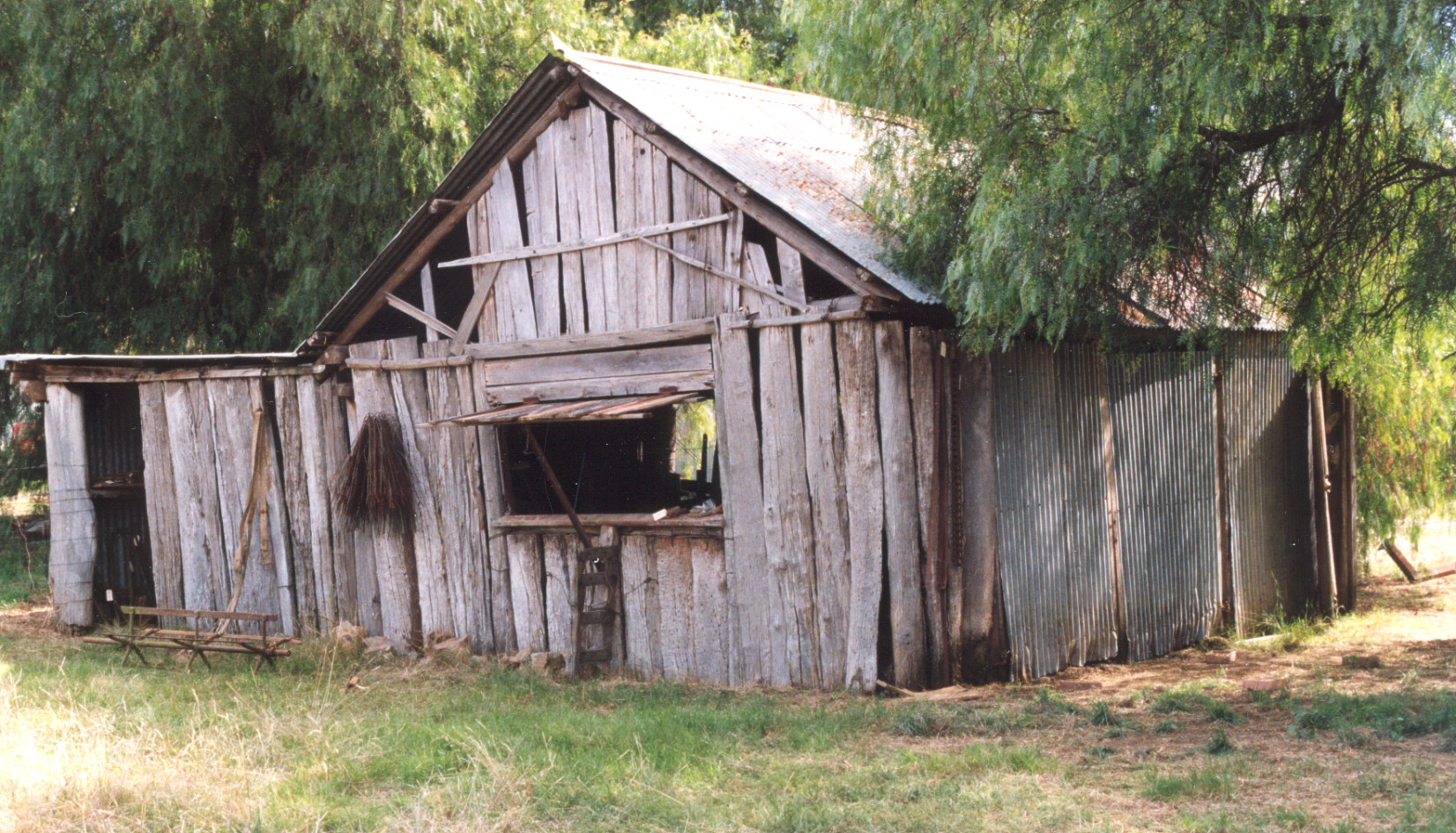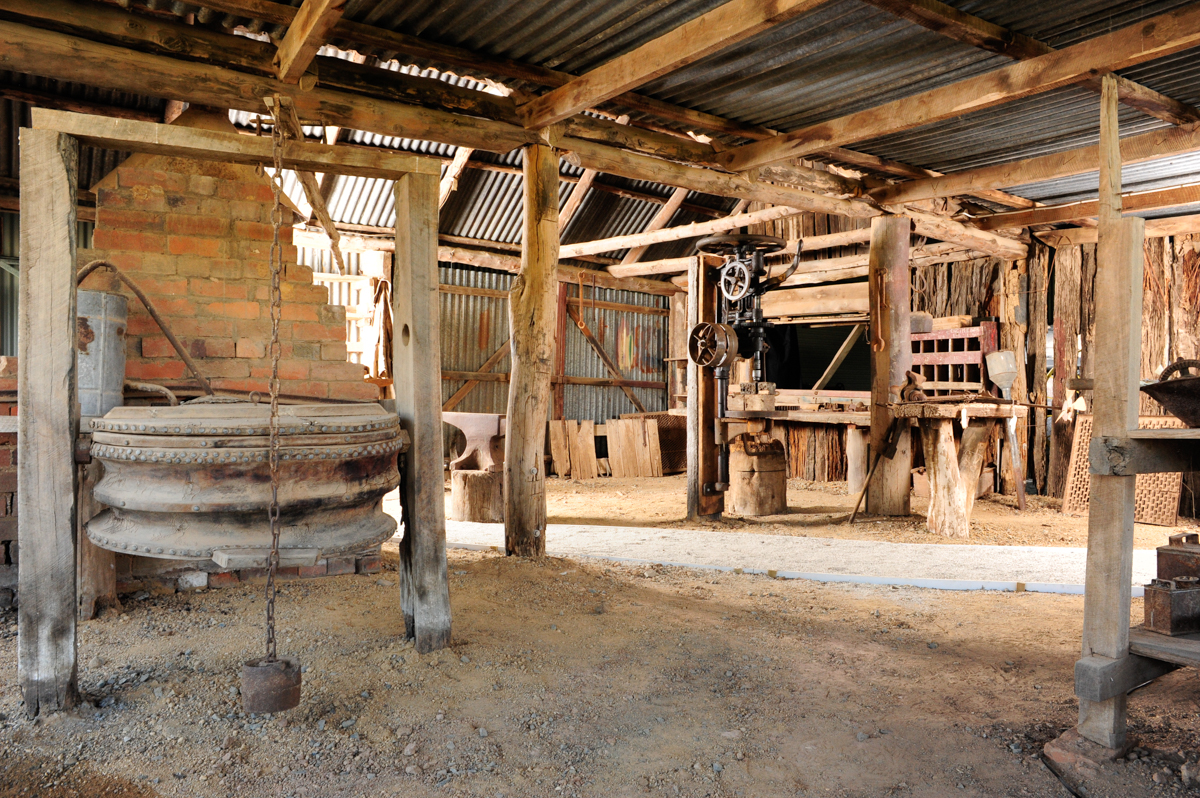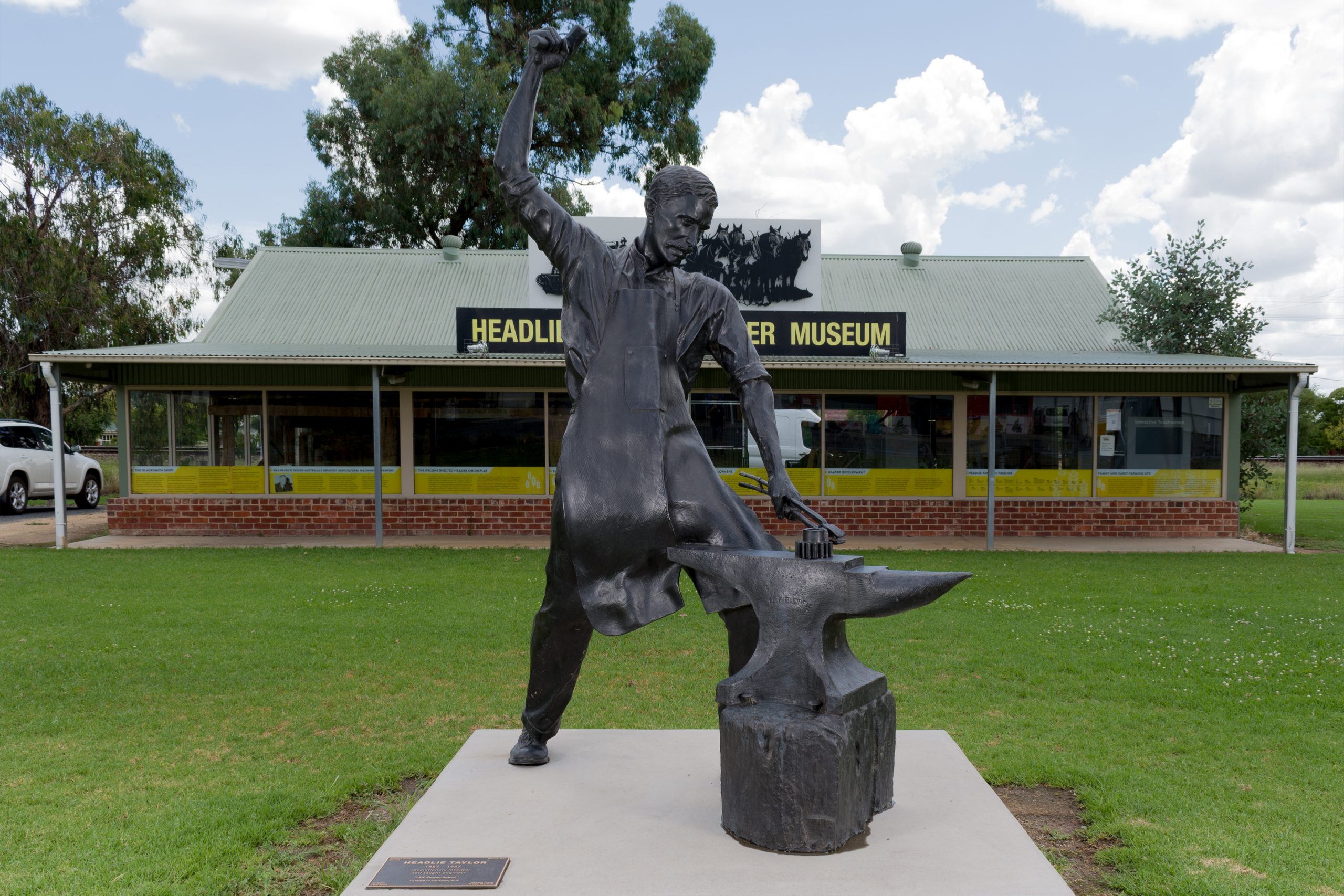Forging a Legacy
The Emerald Hill Blacksmith Workshop
Those familiar with Headlie Taylor (1883-1957) might feel inspired upon entering his humble blacksmith workshop.
The building was originally constructed by his parents as part of their family farm, ‘Emerald Hill’ near Henty in southern NSW, in 1880. Emblematic of farm buildings of the time, the functional shed had an earth floor while the pole framed walls were a mix of wooden slabs and corrugated iron. The initial simplicity of the blacksmith was later expanded upon when Taylor decided to convert the space into an engineering workshop around 1911.
The conversion required more space, so an extension with larger doors was built. Inside, he rebuilt the forge to handle larger pieces of metal beyond simple horseshoes. The larger anvil and engineering equipment, such as the drill press and grinding wheels, were added along with a small engine to run them. Throughout the roof space, flat belts would have spun from the engine to the tools in what would be considered an occupational health and safety nightmare today.
The workshop speaks to a time when metalworking was still done through physical trial and error in the heat of an unwieldy forge. In saying that, the significance of the building is not necessarily in its construction – after all, much of it is quite typical of a blacksmith workshop at the time.
Taylor would go on to work a decades-long career producing innovative agricultural machinery with HV McKay and the Sunshine Harvester Works, but it all began on the dirt floors of this family workshop. It was here that he produced the prototypes for his header harvesters which would go on to revolutionise the grain industry.
For this reason, in 2010, the workshop was relocated to Henty’s Bicentennial Park to form the basis of the Headlie Taylor Header Museum.


